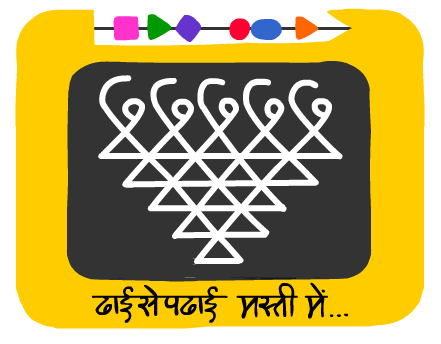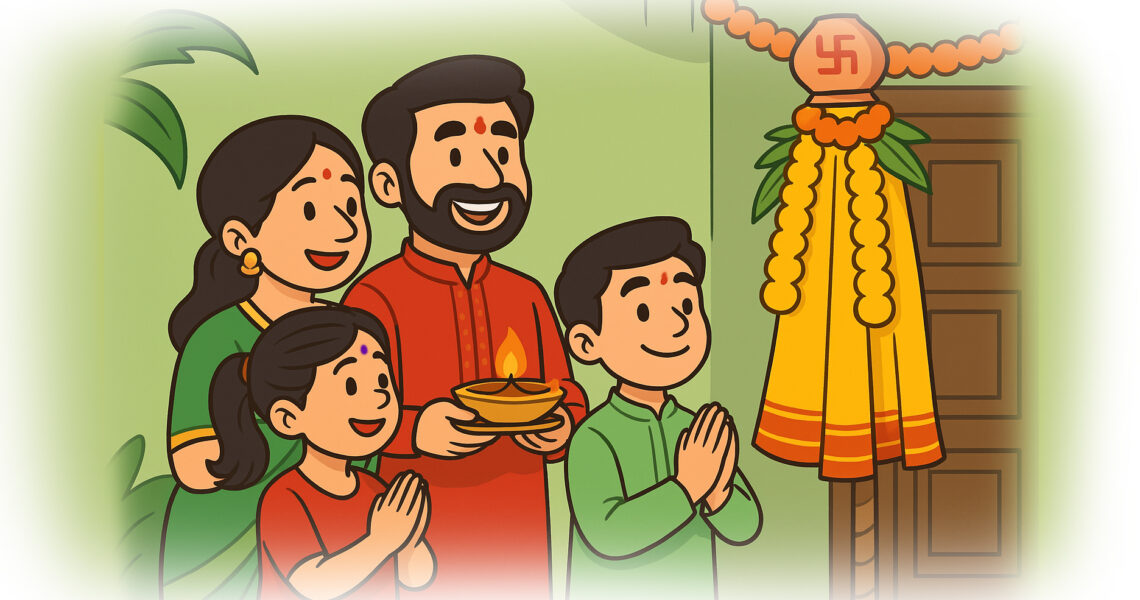Gudi Padwa: The Hindu New Year That Aligns with Nature’s Rhythms
Gudi Padwa, the traditional Maharashtrian New Year, is more than just a festive occasion; it is a celebration deeply rooted in cultural, spiritual, and scientific significance. Unlike the Western New Year, which begins at midnight without any noticeable changes in nature, Gudi Padwa marks a tangible shift in the environment, symbolizing renewal, prosperity, and victory.
Historical Significance of Gudi Padwa
Gudi Padwa falls on the first day of the Chaitra month according to the Hindu lunisolar calendar. This auspicious day is believed to be when Lord Brahma created the universe and time itself began. It is also associated with the return of Lord Rama to Ayodhya after defeating Ravana, making it a symbol of victory and righteousness. Furthermore, it is said to commemorate Chhatrapati Shivaji Maharaj’s military triumphs, adding to its historical grandeur.
Scientific Relevance: A New Year That Aligns with Nature
Unlike the Gregorian New Year, which is based purely on the man-made calendar, Gudi Padwa is scientifically aligned with nature’s transitions. It marks the spring equinox period, when days start becoming longer than nights. This period is crucial for agriculture as it indicates the end of winter and the beginning of a new harvest cycle. Farmers welcome this time as an indication of prosperity and new beginnings.
Additionally, the air during this season is enriched with fresh energy, and consuming bitter neem leaves on Gudi Padwa is believed to boost immunity, a practice supported by Ayurveda.
Spiritual Importance of Gudi Padwa
Gudi Padwa is considered highly auspicious for spiritual growth and new beginnings. The ‘Gudi,’ a symbolic flag-like structure hoisted outside homes, represents victory, purity, and divine blessings. It is believed to ward off negativity and attract positive energy, much like how Lord Indra’s divine flag signifies protection in Hindu mythology. The inverted copper or silver pot atop the Gudi is said to symbolize the Kalash (divine vessel) of prosperity.
When and How is Gudi Padwa Celebrated?
Gudi Padwa usually falls in March or April, depending on the lunar cycle. The celebrations involve:
Raising a Gudi: A bright silk cloth, neem and mango leaves, and a garland adorn a bamboo stick topped with an inverted pot.
Traditional Rangoli: Beautiful, colorful rangoli patterns are drawn at the entrance of homes.
Special Food: Dishes like Puran Poli, Shrikhand, and neem-jaggery paste are prepared to mark the day.
New Beginnings: People start new ventures, purchase gold, or move into new homes on this day.
Celebrations Across India with Regional Variations
Though Gudi Padwa is specific to Maharashtra, it is celebrated in different ways across India, often with a slight time variation due to regional climatic differences:
Ugadi (Karnataka, Andhra Pradesh, Telangana): Similar to Gudi Padwa, Ugadi marks the New Year and is celebrated with Bevu-Bella (a mixture of neem and jaggery, symbolizing life’s bittersweet nature).
Cheti Chand (Sindhi New Year): Celebrated by Sindhis in honor of Jhulelal, their patron deity.
Navreh (Kashmir): The Kashmiri Pandit New Year, marked by religious prayers and traditional feasts.
Samvatsar Padvo (Konkan): The Konkani version of Gudi Padwa, celebrating the new harvest.
Why Does the Hindu New Year Vary by Location?
The Hindu lunisolar calendar considers both the moon and the sun’s positions, unlike the Western calendar, which follows only the solar cycle. Since different regions experience seasonal changes at slightly different times, the Hindu New Year varies by a few days across India. This scientific approach ensures that the festival aligns with the natural cycle of renewal and agricultural transitions.
Final Thoughts
Gudi Padwa is not just a festival; it is a spiritual, scientific, and historical phenomenon that marks the beginning of a new cycle in alignment with nature. It teaches us the importance of celebrating change, embracing positivity, and welcoming new beginnings with gratitude. Unlike the midnight celebrations of January 1st, which occur in the dark with no significant natural transition, Gudi Padwa celebrates the real shift in seasons and time, making it a truly meaningful and technically correct New Year celebration.
Wishing you a prosperous and joyous Gudi Padwa! Gudi Padwyachya Hardik Shubhechha!

